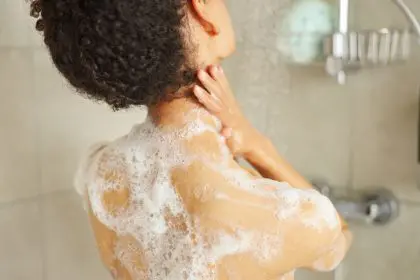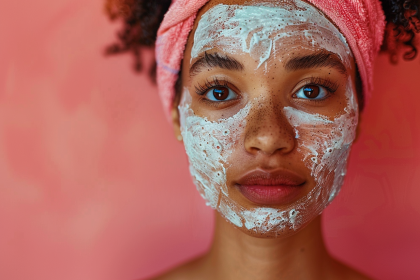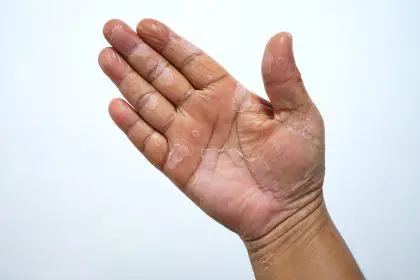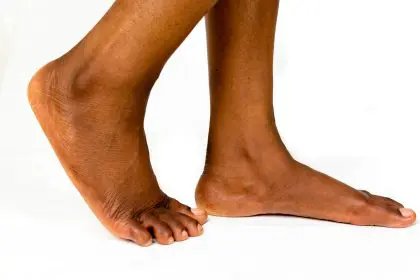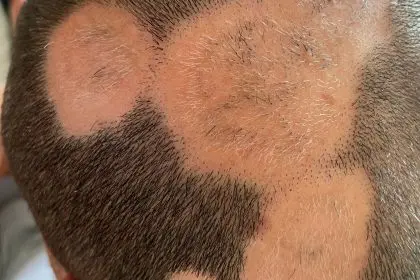Every morning, millions of people grab their razors and unknowingly set themselves up for a day of skin torture. What should be a simple grooming routine turns into a battlefield where your skin loses every single time. Those angry red bumps that pop up after shaving aren’t just annoying, they’re your skin’s way of screaming that something is seriously wrong with your approach.
Pseudofolliculitis barbae, which sounds like a fancy medical term but basically means razor bumps, affects up to 80% of Black men and a significant number of people with curly or coarse hair. But here’s the kicker, it’s almost entirely preventable if you know what you’re doing wrong and how to fix it.
The problem is that most people approach shaving like they’re trying to clear cut a forest rather than carefully grooming delicate skin. They use dull blades, shave too aggressively, and follow techniques that practically guarantee ingrown hairs and painful bumps. It’s like using a chainsaw when you need a scalpel.
Your hair follicles weren’t designed to handle the abuse that most shaving routines dish out. Each time you shave incorrectly, you’re creating microscopic wounds, forcing hairs to grow in wrong directions, and setting up a cycle of inflammation that can last for days or even weeks. The worst part is that many people think this discomfort is just part of shaving, when it absolutely doesn’t have to be.
Your hair is plotting against your skin
The shape and texture of your hair plays a huge role in whether you’ll develop razor bumps. Curly or coarse hair has a natural tendency to curl back toward the skin after being cut, especially when it’s cut too short or at the wrong angle. It’s like your hair has a built in homing device that sends it straight back into your skin.
When a hair grows back into the skin instead of straight out of the follicle, your body treats it like a foreign invader. Your immune system kicks into high gear, sending inflammatory cells to attack what it perceives as a threat. This creates those raised, red, painful bumps that can last for weeks and sometimes leave permanent scarring.
The curlier your hair, the more likely it is to cause problems. Straight hair tends to grow up and out of the follicle in a predictable pattern, while curly hair can twist and turn as it grows, increasing the chances that it’ll take a wrong turn and head back into your skin.
Hair thickness also matters more than you might think. Coarse, thick hairs are more likely to pierce through skin when they curl back, while fine hairs might just cause irritation without actually penetrating. It’s like the difference between being poked with a needle versus being scratched with a feather.
Your shaving technique is sabotaging your skin
Most people learned to shave by watching someone else or just figuring it out as they went along, which means they probably picked up some terrible habits that guarantee skin problems. The biggest mistake is shaving against the grain, which might give you a closer shave but also dramatically increases your risk of ingrown hairs.
When you shave against the direction of hair growth, you’re essentially lifting the hair up and cutting it below skin level. This creates a sharp point that can easily pierce back into the skin as it grows. It’s like creating tiny spears that are perfectly positioned to stab your skin from the inside.
Using too much pressure is another common mistake that turns your razor into a weapon against your skin. Your razor should glide across your skin, not scrape against it like you’re trying to remove paint from a wall. Excessive pressure increases irritation, causes more cuts, and makes ingrown hairs more likely.
Shaving the same area multiple times, especially without proper lubrication, is like taking sandpaper to already irritated skin. Each pass of the razor removes more of your skin’s protective barrier and increases inflammation. If you’re going over the same spot three or four times trying to get every hair, you’re practically guaranteeing razor bumps.
Your razor is older than your last relationship
Using dull razors is one of the fastest ways to turn shaving into a skin destroying nightmare. A sharp blade cuts through hair cleanly with minimal tugging and pulling, while a dull blade yanks and tears at hairs, creating irregular cuts that are more likely to become ingrown.
Dull blades also require more pressure to cut through hair, which increases skin irritation and the risk of nicks and cuts. It’s like trying to slice a tomato with a butter knife, you end up crushing and mangling instead of making clean cuts.
Most people use their razors far longer than they should. A good rule of thumb is to replace disposable razors after five to seven shaves, or when you notice any tugging or increased irritation. If you’re using a safety razor or electric shaver, the blades or cutting heads need regular replacement too.
The type of razor you use matters just as much as how sharp it is. Multi blade razors might seem like they’d give better results, but they can actually increase the risk of ingrown hairs by lifting and cutting hairs too short. Sometimes a single blade razor gives better results for people prone to razor bumps.
Pre shave prep that actually prevents problems
What you do before you start shaving can make the difference between smooth skin and a face full of angry bumps. Most people jump straight into shaving without any preparation, which is like trying to mow dry grass instead of waiting for morning dew.
Softening your hair and skin before shaving makes everything easier and less traumatic for your skin. Taking a hot shower or applying a warm, damp towel to your face for a few minutes opens up your pores and softens the hair, making it easier to cut cleanly.
Using a pre shave oil can provide an extra layer of protection between your skin and the razor. These oils help the razor glide smoothly while providing lubrication that reduces friction and irritation. It’s like putting oil on a squeaky hinge, everything just works better.
Exfoliating regularly, but not right before shaving, helps prevent ingrown hairs by removing dead skin cells that can trap growing hairs. Use a gentle scrub or exfoliating cloth a day or two before shaving to keep your skin smooth without causing pre shave irritation.
The shaving cream mistake everyone makes
Not all shaving creams are created equal, and many popular drugstore brands actually make razor bump problems worse. Shaving creams with alcohol, menthol, or heavy fragrances can irritate sensitive skin and strip away natural oils that protect against razor burn.
A good shaving cream should provide cushion between your razor and skin while allowing the blade to glide smoothly. It should also moisturize your skin rather than dry it out. Look for products with natural ingredients like aloe vera, glycerin, or coconut oil that soothe and protect skin.
The way you apply shaving cream matters too. Most people just slap it on and start shaving, but taking time to work the cream into your hair with circular motions helps lift the hairs and creates better lubrication. It’s like the difference between washing your hair with shampoo versus just pouring it on top of your head.
Using enough product is crucial but so is not using too much. A thin, even layer provides better protection than a thick glob that just gets in the way of your razor. You should be able to see your skin through the shaving cream, not have it completely obscured.
After shave care that heals instead of hurts
What you do immediately after shaving can either help your skin recover or make razor bump problems worse. Many people reach for alcohol based aftershaves that sting and burn, thinking that means they’re working, but alcohol just dries out and further irritates already traumatized skin.
Rinsing with cool water immediately after shaving helps close your pores and reduce inflammation. Pat your skin dry gently instead of rubbing with a towel, which can irritate freshly shaved skin and potentially push bacteria into open pores.
Applying a moisturizer while your skin is still slightly damp helps lock in hydration and creates a protective barrier. Look for fragrance free moisturizers with ingredients like ceramides or hyaluronic acid that help repair and protect your skin barrier.
If you’re prone to ingrown hairs, using products with salicylic acid or glycolic acid can help prevent hairs from getting trapped under the skin. These ingredients gently exfoliate and keep pores clear, but start slowly because they can be irritating if you use too much too quickly.




